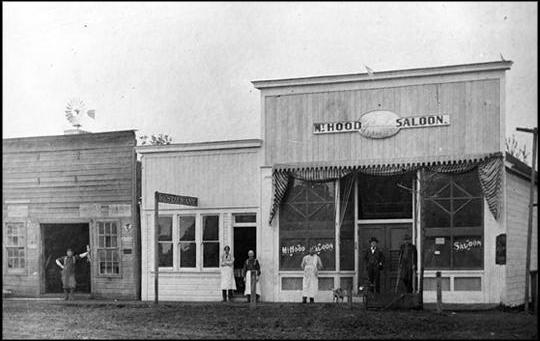Mill Street (Springfield)
From Lane Co Oregon
Locations · People · Equipment · Chronology · Index · Categories · Browse · Discussion · FAQ · Help · Things to do · Article requests
[edit] 1850s
- According to an article in the Eugene Register dated July 4, 1891, the first store was opened in 1852 by James Huddleston on the east bank of the Willamette River as a trading post in Springfield, near Mill and Main Street.
- In 1853, a small trading post was kept by J.N. Donalds near the corner of present-day Mill and Main Streets (Walling 1884:452).
- Springfield was platted in 1856, at which time two blocks between South A, Main, Mill, and Third Streets were laid out into eight lots each. The lots measured 66x120 feet, with streets 66 feet in width and alleys 14 feet wide. Though the town was oriented to the Willamette River, it developed along a standard grid system that was aligned to the four cardinal directions.
- Throughout its history, the Mill Pond served as a popular place to gather for picnics, canoing, fishing, and swimming. For a time, a diving board and changing room were erected at the corner of Mill and 28th.
[edit] 1880s
- The school district replaced the pioneer school building in the 1880s. The Mill Street School, as it was called, was only a one-story, two-room building, which the student population quickly outgrew. The school was the first of a series of schoolhouses to occupy the Mill and D Street site that now holds the present school administration building, which was built in 1921 as a high school (Graham 1978a).
- There is evidence that a cheese factory was in operation on Mill Street until 1889, when the factory building was converted into a school (Graham 1978a).
Mill Street School was forced to move its students in 1889 to a former cheese factory, which served as a school until circa 1910. A new schoolhouse was constructed at the old Mill Street School site in 1890 (Kraus 1970:25). Between 1907 and 1912, this building was enlarged and converted to a high school. Three schools outside the city limits were built during this period – Mt. Vernon on South 42nd Street (1880s and c.1905), Maple School at 26th and Main (c.1900), and Hayden Bridge School (c.1910). The Hayden Bridge and Mt. Vernon schools are extant.

